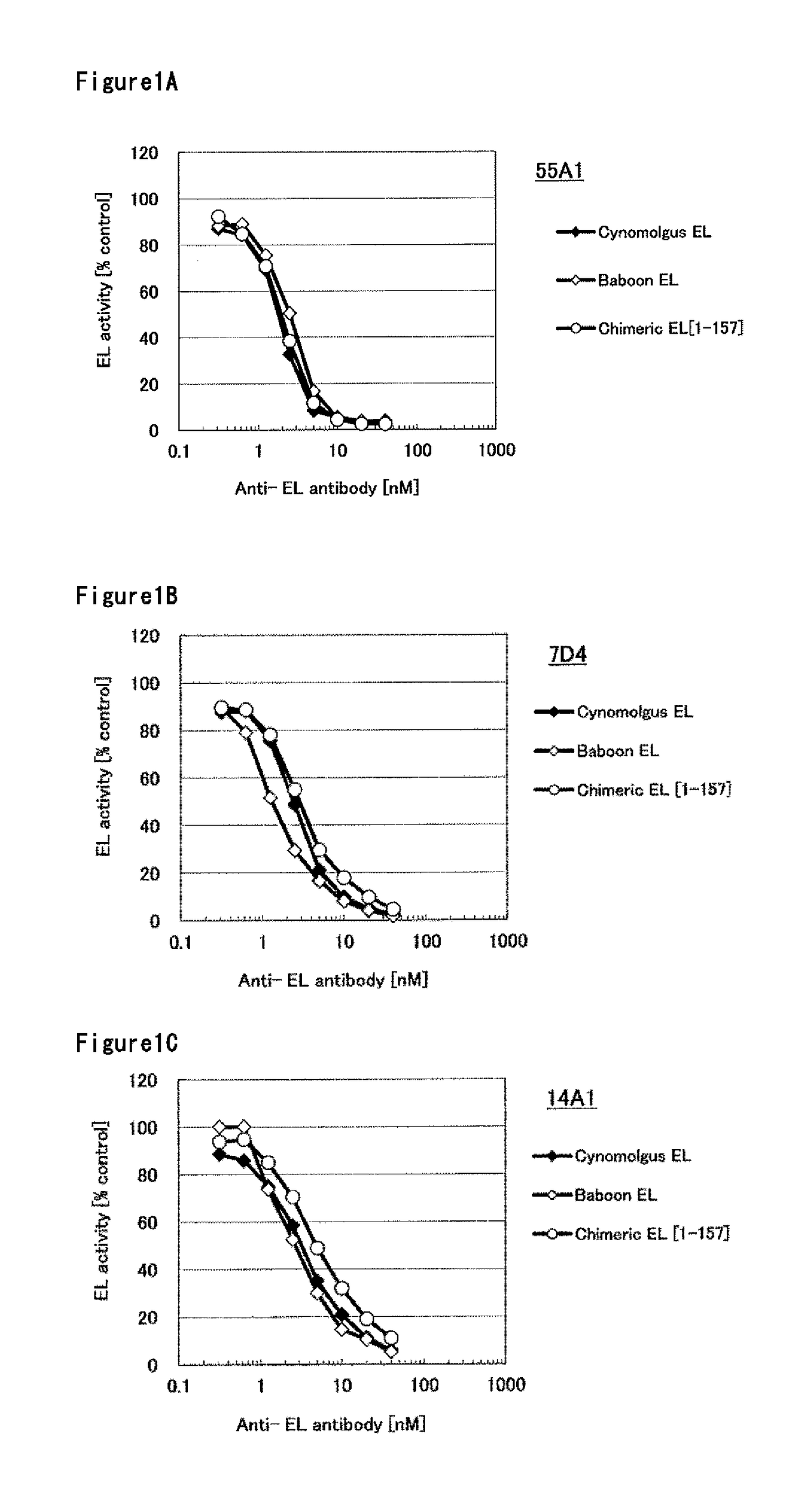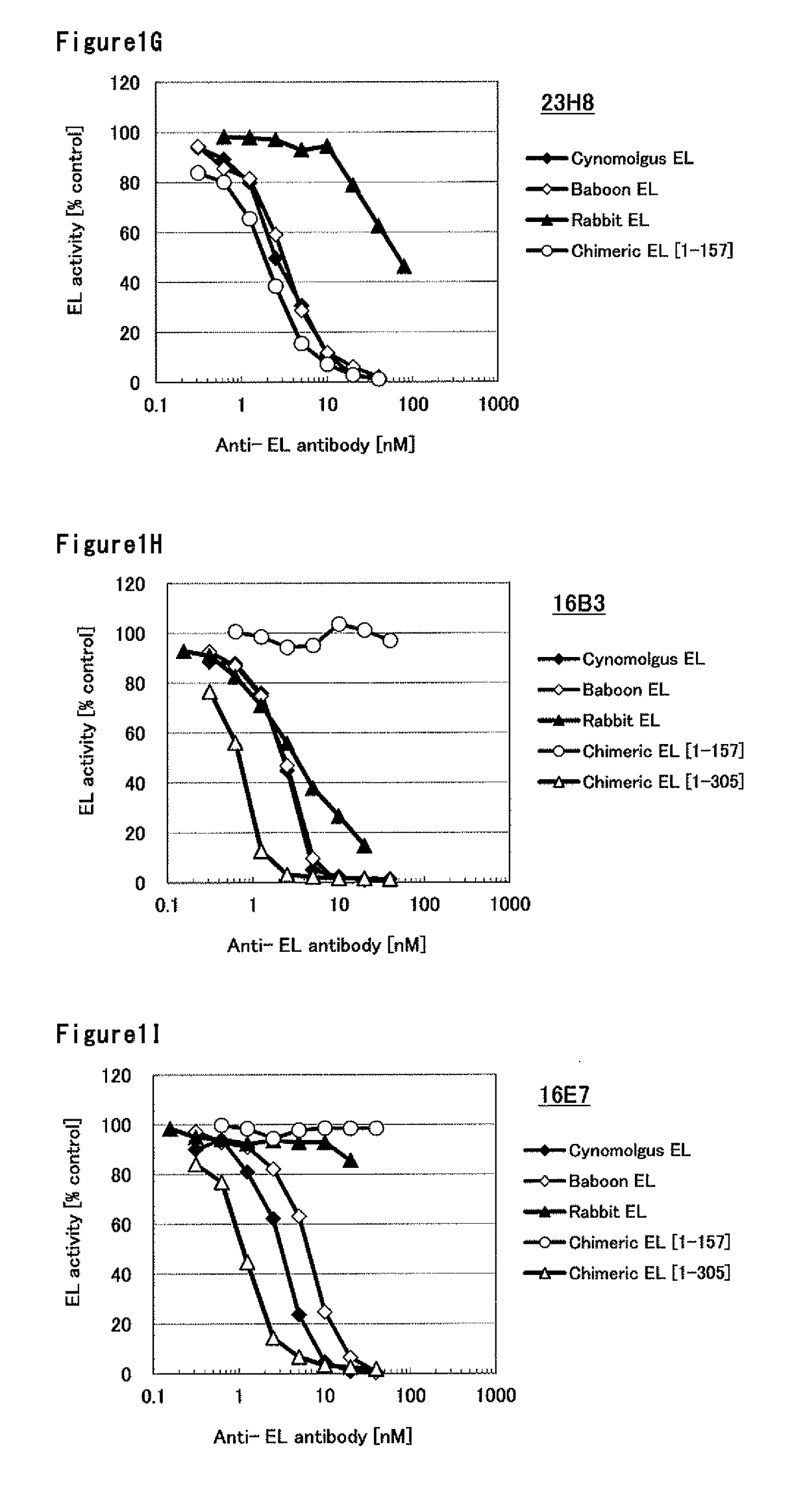Humanized monoclonal antibody, inhibiting the enzymatic activity of vascular endothelial lipase
- Summary
- Abstract
- Description
- Claims
- Application Information
AI Technical Summary
Benefits of technology
Problems solved by technology
Method used
Image
Examples
reference example 1
Preparation of Recombinant Adenovirus to Express Baboon EL
[0427]The cDNA of baboon EL with C2 tag was cloned into pShuttle vector (Clontech). This sub-cloned vector and the vector carrying adenoviral backbone gene was digested by PI-SceI and I-CeuI enzyme (Adeno-x Accessory Kit, Clontech). The ligation reaction of the digested fragments was conducted at 16° C. for 3 hrs (Ligation high, TOYOBO) and the ligation products were transformed to E. coli (OneShot stbl3 Chemically Competent, Invitrogen). After selection of Ampicillin, plasmid DNA was purified from obtained clone (QIAprep spin Miniprep Kit, QIAGEN) and was digested by PacI enzyme to cut E. coli growth area (New England Biolabs). With the above, plasmid DNA was acquired to generate adenovirus vector. Acquired plasmid DNA was transfected to HEK293 cells (American Type Culture Collection) using Lipofectamine 2000 (Invitrogen) and cultured in DMEM containing 10% FBS at 37° C. After transfection, we changed culture medium every 5 ...
reference example 2
Immunization of Baboon EL Expression Adenoviral Vector
[0428]6 week-old female mice (A / J Jms Slc spices, obtained from Nihon SLC) were immunized intravenously, subcutaneously or intramuscularly with 2×109 i.f.u. adenovirus vector carrying baboon EL gene. Every 7 days after administration, the blood sample was taken from tail vein and the antibody titer was measured. And, additional administration of adenovirus vector carrying baboon EL gene was done intravenously, subcutaneously or intramuscularly. The mice which showed high titer were booster immunized from tail vein as the final administration.
reference example 3
Production of Hybridoma Producing Antibodies
[0429]The abdominal cavity of mouse which showed high titer was opened and the spleen was isolated three days after final immunization. Spleen cells and mouse myeloma cells (p3×63-Ag8.U1, Tokyo tumor laboratories) were fused using 50% polyethylene glycol 4000, and hybridoma cells were selected in a culture medium containing hypoxanthine, aminopterin and thymidine.
PUM
| Property | Measurement | Unit |
|---|---|---|
| Current | aaaaa | aaaaa |
| Current | aaaaa | aaaaa |
| Current | aaaaa | aaaaa |
Abstract
Description
Claims
Application Information
 Login to View More
Login to View More - R&D
- Intellectual Property
- Life Sciences
- Materials
- Tech Scout
- Unparalleled Data Quality
- Higher Quality Content
- 60% Fewer Hallucinations
Browse by: Latest US Patents, China's latest patents, Technical Efficacy Thesaurus, Application Domain, Technology Topic, Popular Technical Reports.
© 2025 PatSnap. All rights reserved.Legal|Privacy policy|Modern Slavery Act Transparency Statement|Sitemap|About US| Contact US: help@patsnap.com



